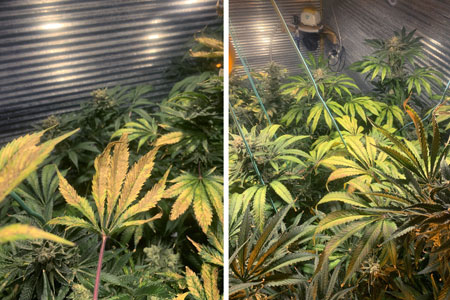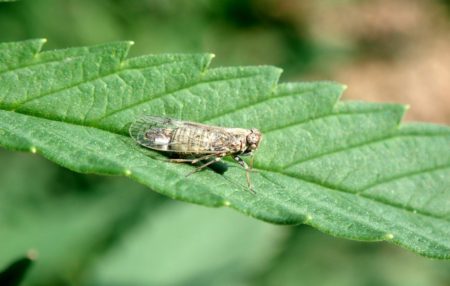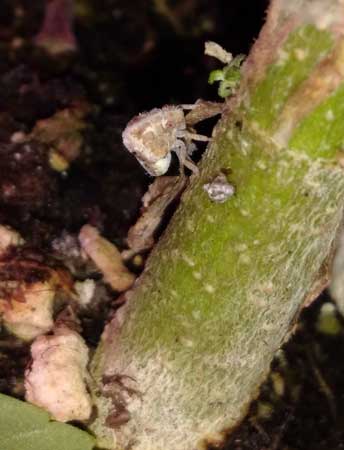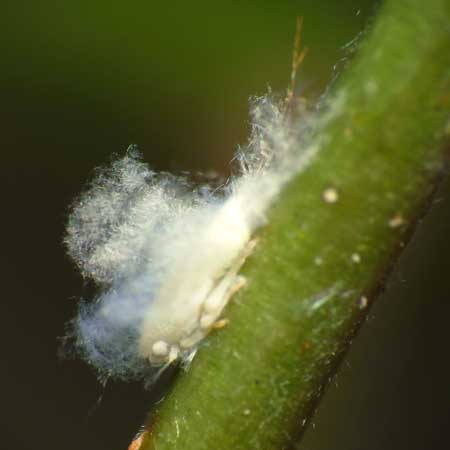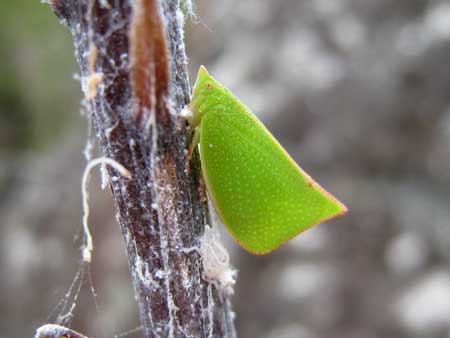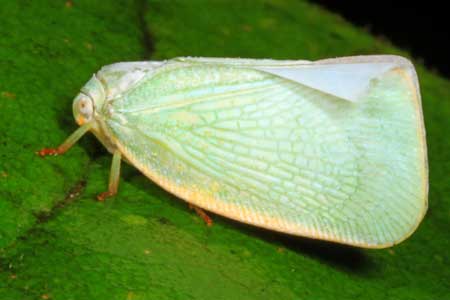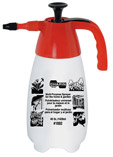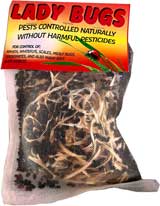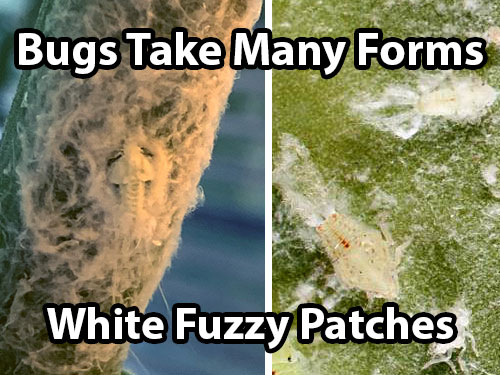
by Nebula Haze
Planthoppers can attack and infest cannabis, leaving a unique cotton-like growth while they suck the life out of your plants! Planthoppers also spread plant diseases, so you want them away from your plants as soon as possible.
Example of leaf damage from planthoppers. (Thanks to George4green for several of the awesome planthopper pics)
Melanoliarus planthopper on a cannabis leaf (Source: Whitney Cranshaw)
Often one of the main symptoms is a white fuzzy growth that is commonly mistaken for mold or white powdery mildew. However, it is actually a secretion from the planthopper. The bugs themselves can look very different depending on the stage of life, I’ll show pictures below!
Planthoppers can leave secretions that resemble cotton or fuzzy white mold. They generally walk slowly, but can also jump surprisingly far (which is likely how they got their name).
Their nymphs (baby planthoppers) may have beedy red eyes, and I’ve heard a grower desribe them as looking like a hermit crab
Their larva also produce the white waxy secretions. This repells water and offers protection.
Adult planthoppers may be more familiar to you
There are several different species of planthopper that all look a little different (they’re usually green, though some are pink or other colors), but the general shape/form is often the same – they usually look like they’re trying to mimic a leaf or some other part of a plant.
Sometimes the form is a bit different
Solution: How to Get Rid of Planthoppers on Cannabis
Planthoppers aren’t too serious, but a lot of them will start to suck the life out of your marijuana. You don’t want that! If it’s just a few bugs you may not notice any symptoms but if your plants start getting infested with plant hoppers you’ll notice your plants start turning sickly and yellow.
1.) Check regularly for signs of planthoppers, especially when it’s dry
The best way to prevent a planthopper infestation (or any bug infestation really) is to catch them as soon as possible. Planthoppers will suck sap moisture out of cannabis leaves most often when it’s dry, because they get thirsty, so that’s a good time to check.
Make sure to look under leaves and all around the plants, as they will try to hide from you, often gliding across the leaf to the other side so you can’t see it.
2.) Spinosad (not for commercial growers)
Spinosad Products (safe & organic) – Spinosad products are organic and completely harmless to pets, children, and plants. Spinosad products can be used directly to kill planthoppers on contact and should be sprayed liberally anywhere you see planthoppers and especially under the leaves. Although maybe not as strong against pests as some of the more harsh insecticides, it does work and it’s very safe for plants, animals and humans!
WARNING: Commercial growers click here!
Recommended: Monterey Garden Insect Spray with Spinosad
Spinosad is an organic insecticide made from the fermentation of a specific soil bacteria (actinomycete Saccharopolyspora spinosa) and kills planthoppers via ingestion or contact by effecting the insect’s nervous system. Spinosad can be a good choice for organic and outdoor growers, because it is very toxic to planthoppers, but is less toxic to many beneficial insects, bug predators and spiders.
Note: Most spinosad products are effective for only about 24 hours after being mixed with water, so only mix as much as you will need per application. Anything left over will be waste.
You will need a mister (also called a “One-Hand Pressure Sprayer”) to cover all the leaves evenly when spraying them with spinosad products.
3.) Insecticidal soaps
Fatty acid salts or insecticidal soaps can be a good choice against planthoppers. They weaken the outer shell of planthoppers but are safe to use on your plants and they don’t leave much of a residue which could kill beneficial bugs in your garden.
With soaps, coverage is very important as it does not stay on your plant for long, so follow-up applications may be necessary. Although this is considered safe, avoid getting any on your buds!
Natria is a proven insecticidal soap
4.) Neem Oil
Neem Oil will leave an unpleasant taste/smell on buds when used to treat flowering plants, so again, don’t let this stuff get near your buds! There’s also some evidence Neem oil may be harmful to humans so use with care. That being said, Neem oil is an all-natural remedy that is very effective against many different types of bugs and mold, including planthoppers. You will need a mister (also called a “One-Hand Pressure Sprayer”) to spray all the leaves evenly, since neem oil and water can separate easily.
5.) Beneficial Insects
Beneficial insects, such as lady beetles, parasitic wasps, lady bugs, and lacewings may eat large numbers of planthoppers and are welcome guests in the garden. Although you can order ladybugs to release around your plants, the bad part is they do tend to fly away in just a day or two.
Ladybugs are good to have around the garden. Lady bugs eat planthoppers and other annoying cannabis pests!
6.) Floating row covers
These may not be the best choice for all cannabis growers, but these are very cheap and effective against planthoppers because it physically prevents them from getting to your plants, while still letting light in to your plants. You can also water your plants through the netting. These are sometimes used to make mini “green houses” on the plants, or some grower will just drap them over the plant as they’re so light and airy they don’t really bother the plant.
However, these are much easier to use and are more effective with smaller plants, as it becomes difficult to fully cover larger plants. However, for young plants these can be great! They also protect your plant from wind and some harsh conditions.
Floating row covers look like thin netting or mesh
7.) Pyrethrin
Pyrethrin-based insecticides are not very toxic for humans, and therefore they’re commonly recommended for vegetable gardens. You will need a mister (also called a “One-Hand Pressure Sprayer”) to spray all the leaves evenly, since pyrethrin concentrate and water can separate easily.
Pyrethrin products break down quickly, over the course of just a day or two. The major problem with them is they are very toxic to bees. Although cannabis plants generally don’t attract a lot of bees, please use this as a last resort, and also try to use it right after the sun goes down because bees sleep at night. This lets it start to break down before they wake up.
Use pyrethrin products as the sun goes down to help reduce possible harm to bees.
A popular example is Bonide 857 Pyrethrin Spray Concentrate. Use 3 tablespoons of concentrate per gallon of water and apply carefully with a mister.

